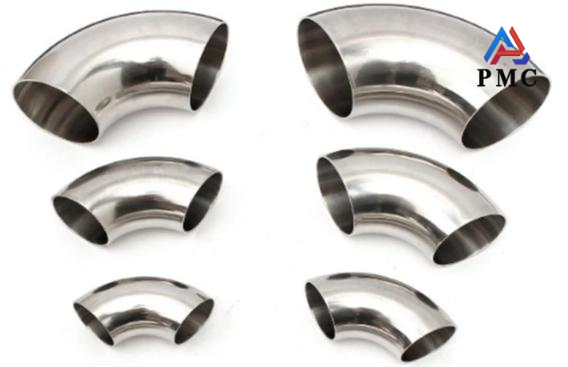
Are Elbow Fittings Safe in High Pressure Environments?
Whether elbow fittings are safe in high-pressure environments depends on multiple factors, including material properties, design standards, manufacturing processes, installation quality, and use environment. The following is a detailed analysis of these factors:
Material properties
The material of the elbow fittings must be able to withstand the stress and strain under high pressure environment. Commonly used high-pressure elbow pipe fittings materials include stainless steel, alloy steel, etc. These materials have excellent mechanical properties, such as high strength, good toughness, and can remain stable under high-pressure environments.
Stainless steel: It has good corrosion resistance and mechanical properties, suitable for a variety of high-pressure environments.
Alloy steel: by adding alloy elements such as chromium, molybdenum, nickel, etc., the strength and corrosion resistance of steel can be significantly improved, suitable for high-pressure and high-temperature environments.
Design Standards
The design of elbow fittings must comply with relevant high-pressure pipeline design standards. These standards specify key parameters such as the minimum wall thickness, connection method, and pressure rating of the fittings to ensure their safety in high-pressure environments.
Small wall thickness: ensure that the pipe fittings will not break due to insufficient wall thickness under high pressure.
Connection method: such as welding, flange connection, etc., firm and reliable to withstand stress under high pressure.
Pressure level: clarify the maximum pressure that the pipe fittings can withstand, and ensure that they do not exceed their rated pressure during use.

Manufacturing process
Advanced manufacturing technology can improve the pressure resistance performance of elbow fittings.
Heat treatment: Through heat treatment processes such as quenching and tempering, the mechanical properties of the material can be changed and its pressure resistance can be improved.
Cold processing: such as cold pushing and cold extrusion, can make the pipe fittings produce work hardening during the forming process, improve their strength and hardness.
Nondestructive testing: Nondestructive testing such as X-ray testing during the manufacturing process can timely detect deficiencies inside the pipe fittings and ensure their quality.
Installation quality
The installation quality of elbow fittings has an important impact on their safety in high-pressure environments.
Correct installation: Follow the correct installation methods and steps to ensure that the pipe fittings are tightly and firmly connected to the pipeline to avoid leakage or looseness.
Control installation stress: Avoid excessive installation stress that may cause deformation or rupture of pipe fittings.
Use special tools: Use special tools and equipment during the installation process to ensure installation quality and efficiency.
Usage environment
The use environment of elbow fittings will also affect their safety in high-pressure environments.
Temperature: High or low temperature environments may affect the mechanical properties of materials, so it is necessary to select materials suitable for the corresponding temperature range.
Corrosive media: In corrosive media, it is necessary to select materials with better corrosion resistance and take corresponding anti-corrosion measures.
Vibration and shock: In environments with large vibration and shock, it is necessary to select materials with better performance and take corresponding vibration reduction and buffering measures.
Safety measures
Even if the elbow fittings themselves have good pressure resistance, a series of safety measures need to be taken to ensure their safe operation under high pressure environments.
Regular inspection: Regularly inspect elbow fittings, including appearance inspection, sealing inspection, etc., to promptly detect and deal with potential problems.
Maintenance: Regularly clean impurities and dirt inside the fittings to keep them clean; perform necessary lubrication and maintenance on the fittings to reduce wear and friction.
Pressure test: Regularly perform pressure tests to ensure that the fittings can withstand the design pressure and promptly detect potential leakage or rupture risks.
Conclusion
The safety of elbow fittings in high pressure environments depends on multiple factors such as material properties, design standards, manufacturing process, installation quality, and use environment. As long as these factors are properly considered and handled, elbow fittings can operate safely in high pressure environments. However, in order to ensure safety, it is recommended to regularly inspect and maintain elbow fittings and take necessary safety measures to deal with potential risks.
Read more: What is the Role of Elbow Fittings in Piping Systems?


